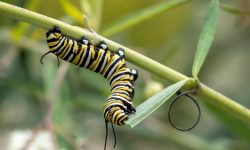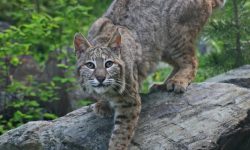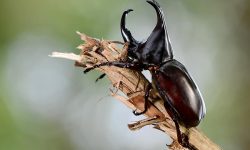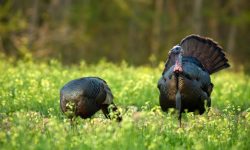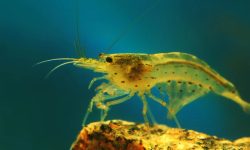Cheetahs, known for being the fastest land animals on Earth, rely heavily on speed, precision and timing to catch their prey. Unlike lions or leopards, cheetahs depend on rapid chases rather than raw strength. Because of this, their diet is made up of prey that is small enough to outrun but large enough to provide enough energy for survival. Understanding what cheetahs eat in the wild helps us appreciate their role in African ecosystems and the challenges they face as specialized predators.
In the wild, cheetahs hunt primarily during the day to avoid conflicts with larger predators like lions and hyenas. Their keen eyesight allows them to spot prey from long distances. Once they select a target, cheetahs accelerate with incredible bursts of speed, tackling and suffocating their prey before eating quickly to avoid scavengers. Since they lose more food to other predators than any big cat, cheetahs must hunt frequently to survive.
This detailed guide explores the 20 foods cheetahs hunt most in the wild, describing how they hunt, why these animals are important for cheetah survival and the ecological balance they help maintain. Each food includes three short, clear paragraphs for depth and readability.
Understanding the Cheetah Diet

Cheetahs are obligate carnivores, meaning they rely entirely on meat for their nutrition. Their diet depends heavily on small to medium-sized ungulates that are fast, agile and abundant. Because cheetahs have lightweight bodies designed for speed, they cannot tackle very large prey like adult zebras or wildebeest. Instead, they specialize in animals they can chase down in short, intense sprints that rarely last longer than 30 seconds.
Unlike other large predators that use strength to overpower prey, cheetahs use stealth and vision. They stalk quietly and rely on a precise, explosive chase. Their slender bones, long legs and flexible spines enable unmatched speed, but these adaptations also make them vulnerable during fights. After catching prey, cheetahs must eat as much as possible before larger carnivores steal their kill. This forces them to hunt more often and maintain high energy output.
The cheetah’s diet also shifts depending on habitat, season and prey availability. In savannas, they rely heavily on gazelles, while in arid regions they may hunt smaller animals such as hares or young antelope. Throughout Africa, cheetahs help regulate prey populations, prevent overgrazing and support ecological balance. Understanding their diet provides insight into the pressures they face and why conservation efforts remain crucial.
20 Foods Cheetahs Hunt Most in the Wild
1. Thomson’s Gazelle
Thomson’s gazelles are the most common prey for cheetahs in East Africa. Their medium size and predictable behavior make them ideal targets. Cheetahs often stalk gazelles from a distance before initiating a quick, explosive chase that ends within seconds.
Young and juvenile gazelles are especially vulnerable because they cannot run as fast or maneuver as efficiently as adults. Cheetahs rely on these abundant gazelles to meet their daily energy needs, especially when raising cubs. A single kill can feed a family for a day.
In savanna ecosystems, the balance between cheetahs and gazelles helps stabilize populations and prevent overgrazing. This dynamic keeps grasslands healthy and supports biodiversity.
2. Impala
Impalas are agile and fast, making them challenging but rewarding prey. Cheetahs typically target younger or slower individuals within the herd. Because impalas stay near woodland edges, cheetahs use tall grass or shrubs for concealment before attacking.
Impalas provide high-calorie meat that helps cheetahs recover from long chases. Mothers with cubs often rely on impalas because they provide enough food for multiple individuals. Impalas also live in large herds, increasing hunting opportunities.
By preying on impalas, cheetahs help maintain herd health, often targeting sick or weak individuals that are easier to catch.
3. Springbok
Springboks are common prey in Southern Africa. Their unpredictable leaps make them harder to catch, but cheetahs use speed and sharp directional changes to close the distance. Once isolated from the herd, springboks become vulnerable to swift attacks.
These antelope offer lean but nutritious meat that sustains adult cheetahs and growing cubs. Their widespread presence in open plains ensures reliable hunting opportunities throughout the year.
Cheetahs help control springbok populations, promoting healthy grazing patterns in grassland ecosystems.
4. Grant’s Gazelle
Grant’s gazelles are larger than Thomson’s gazelles, providing more meat per kill. Cheetahs typically pursue younger or smaller individuals because adults can outrun them over long distances. These gazelles thrive in open habitats ideal for cheetah stalking.
They are especially important for cheetahs living in regions with fewer small ungulates. Their size helps sustain adult males that require more energy. Mothers also benefit from Grant’s gazelles when feeding growing cubs.
The relationship between predators and gazelles contributes to ecosystem stability by balancing herbivore numbers.
5. Steenbok
Steenboks are solitary, small antelope that rely on stillness and camouflage to avoid predators. Their small size makes them easier for cheetahs to tackle without risk of injury. Cheetahs often catch steenboks during morning or late-afternoon hunts.
These antelope provide moderate amounts of meat and are ideal for lone cheetahs needing quick meals. Their abundance across southern savannas makes them convenient and accessible prey.
By hunting steenboks, cheetahs help regulate small antelope populations and support vegetation balance in arid regions.
6. Duiker
Duikers are forest and woodland antelope that move quickly through dense vegetation. Cheetahs hunt duikers when venturing into bushy areas, relying on short bursts of speed rather than long chases. Duikers freeze when alarmed, giving cheetahs a moment to strike.
Their compact bodies provide rich protein and enough energy to sustain adults for a day. Duikers are especially important in areas with mixed habitats where open-grass prey is less available.
Predation on duikers helps maintain healthy underbrush structure and prevents overbrowsing in wooded habitats.
7. Hares
Hares are fast and agile, requiring precise timing from cheetahs. Because hares zigzag unpredictably, cheetahs must anticipate their movements to make successful kills. Hares are lightweight but abundant, offering frequent meals for young or inexperienced cheetahs.
Hares are especially valuable during dry seasons when larger prey becomes scarce. Their high reproductive rates ensure consistent availability across habitats.
Cheetahs hunting hares benefit from quick, low-risk energy boosts that help them maintain strength between larger kills.
8. Young Wildebeest
Young wildebeest calves are targeted during calving season when herds expand dramatically. Cheetahs avoid adults but can easily overpower newborns or weak calves separated from their mothers. These seasonal opportunities provide high-nutrient meals.
A single calf offers substantial calories, helping adult cheetahs regain weight after long hunts. Mothers raising cubs particularly benefit from wildebeest calves because they provide enough meat for multiple feedings.
Predation on calves helps regulate wildebeest populations and supports natural herd dynamics.
9. Dik-dik
Dik-diks are among the smallest antelope in Africa, making them easy targets for cheetahs living in brushland and thorn scrub habitats. Their predictable movements and limited speed allow cheetahs to ambush them efficiently.
Although small, dik-diks provide lean meat that sustains adult cheetahs. They are especially helpful for solitary males that roam large territories and need quick, manageable meals.
Dik-diks are abundant and reproduce frequently, making them reliable prey in arid environments.
10. Guinea Fowl
Guinea fowl are ground-dwelling birds that offer protein-rich meals for cheetahs. Although they can fly short distances, cheetahs can catch them during feeding or dust-bathing moments. Their ground-based lifestyle increases vulnerability.
These birds provide lighter but important nutrition, especially for young cheetahs learning to hunt. Guinea fowl flocks also gather in predictable areas, making them easier to locate.
By hunting guinea fowl, cheetahs help control bird populations that might otherwise overconsume seeds and insects.
11. Bustards
Bustards are large birds that spend most of their time walking rather than flying. Cheetahs exploit this behavior, using stealth to approach close before sprinting. Their size makes them a substantial meal despite being a single prey item.
Bustards provide dense meat that supports high energy needs for adult cheetahs. Their presence in open savannas overlaps with cheetah hunting grounds, creating consistent opportunities.
Predation on bustards helps keep bird populations stable and balanced in grassland ecosystems.
12. Warthog Piglets
Warthog piglets are occasional prey when cheetahs encounter young individuals without the protection of adult boars. Because adult warthogs can be dangerous, cheetahs focus strictly on piglets or weakened juveniles.
Piglets offer fatty, nutritious meat that supports periods of high energy expenditure. These kills often occur during dry seasons when other prey is limited.
Cheetahs help regulate warthog numbers, especially in areas where piglet survival is naturally high.
13. Baboons (Young)
Cheetahs rarely hunt baboons, but young or isolated individuals may be taken when opportunities arise. Because baboons live in large groups and can fight back, cheetahs only target vulnerable juveniles.
Young baboons provide calorie-rich meat that supports adult cheetahs. These hunts require precision and timing to avoid retaliation from troop members.
Although rare, predation on baboons shows the cheetah’s adaptability and opportunistic nature.
14. Reedbuck
Reedbucks are medium-sized antelope living near wetlands and tall grasses. Cheetahs ambush them by using dense grass cover to hide before sprinting. Young or distracted reedbucks are the most common targets.
Their meat is substantial enough to feed adult cheetahs for hours. Reedbucks serve as dependable prey in wetland-adjacent savannas.
Predation on reedbucks helps maintain balanced grazing patterns and prevents habitat overuse.
15. Waterbuck Calves
Waterbuck calves are targeted when they wander from the herd or hide in tall grass. Adult waterbucks are too large and dangerous for cheetahs, but calves are manageable prey during calving seasons.
These calves provide large meals essential for cheetah mothers raising cubs. Their hides and muscle content offer slow-releasing energy.
Hunting calves prevents overpopulation in waterbuck herds, ensuring ecosystem balance around wetlands.
16. Ostrich Chicks
Ostrich chicks cannot outrun a cheetah despite their long legs. Cheetahs typically stalk and capture them before they reach the safety of adults. Adult ostriches are avoided because they can deliver deadly kicks.
Ostrich chicks provide nutritious meat suitable for both adult cheetahs and their cubs. These seasonal prey are available mainly during breeding periods.
Predation on chicks helps regulate ostrich populations while supporting cheetah families during crucial growth months.
17. Jackal Pups
Although rare, cheetahs may attack jackal pups when competition for food intensifies. Jackal dens near grasslands become targets when pups venture outside, offering small but calorically valuable meals.
Jackal pups provide concentrated protein that helps adult cheetahs maintain muscle mass. These hunts usually occur opportunistically rather than intentionally.
This predation reduces competition from jackals, which often scavenge cheetah kills.
18. Korhaan Birds
Korhaans are ground birds commonly found in open savannas. Their tendency to freeze when threatened gives cheetahs a chance to approach silently. Once close, cheetahs sprint forward to capture them before they take flight.
These birds offer moderate nutrition and are easy for cheetahs to consume quickly. They are especially important for young cheetahs practicing short-distance chases.
Korhaan predation helps maintain balanced populations of ground birds.
19. Small Rodents
Cheetahs occasionally hunt rodents during times of prey scarcity. Although small, rodents provide quick energy and are easy to catch, requiring minimal pursuit. Cheetahs detect them through movement or sound in grass.
Rodents help cheetahs bridge the gap between larger kills. Their small size makes them ideal snacks rather than main meals.
Despite being minor in the overall diet, rodents demonstrate the cheetah’s ability to adapt when larger prey is unavailable.
20. Carrion (Rare but Occasional)
Cheetahs prefer fresh kills but may eat carrion under extreme conditions. They scavenge only when other predators are absent because they avoid direct conflict. Carrion offers easy calories during hardship.
Scavenging can help cheetahs recover energy quickly after failed hunts. Although not common, it reflects their flexibility in harsh seasons.
Carrion feeding contributes to natural cleanup processes and nutrient recycling.
FAQs About What Do Cheetahs Eat
What do cheetahs mostly eat?
Their primary food includes gazelles, impalas, springboks and other small to medium antelope.
Do cheetahs eat meat only?
Yes. Cheetahs are strict carnivores that rely entirely on animal protein.
How often do cheetahs hunt?
Typically every one to three days, depending on prey size and hunger levels.
Do cheetahs eat zebras?
They occasionally hunt zebra foals, but adult zebras are too large and dangerous.
Do cheetahs eat birds?
Yes. They commonly hunt ground birds such as guinea fowl and bustards.
Do cheetahs eat carrion?
Rarely, but they may scavenge if desperate or after losing kills to larger predators.
Do cheetahs hunt in groups?
Only mothers with cubs may hunt cooperatively. Adult males and females hunt alone.
What do cheetah cubs eat?
They eat small pieces of meat provided by their mother until they learn to hunt.
Do cheetahs drink water often?
They obtain moisture from prey but will drink water every few days if available.
Why don’t cheetahs hunt large animals?
Their lightweight frames are built for speed, not wrestling large or strong prey.
Final Thoughts
Cheetahs depend on a wide range of small to medium-sized prey to survive in Africa’s diverse landscapes. Their specialized hunting strategies, incredible speed and reliance on stealth shape their diet and ecological role. By understanding what cheetahs eat in the wild, we gain insight into their daily challenges, energy demands and importance in maintaining healthy ecosystems. Protecting their prey and habitats ensures that these extraordinary animals continue to thrive across their natural range.

